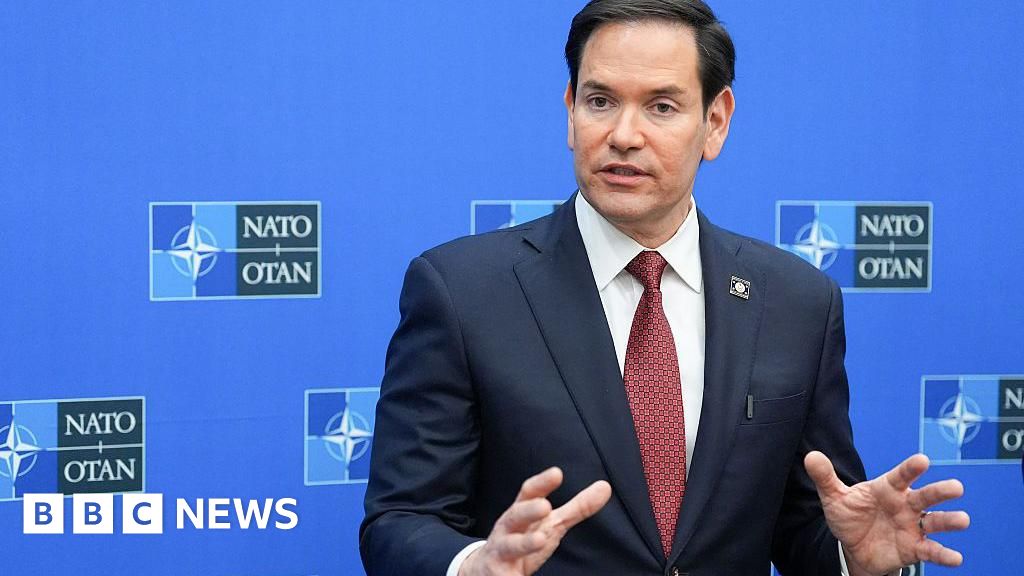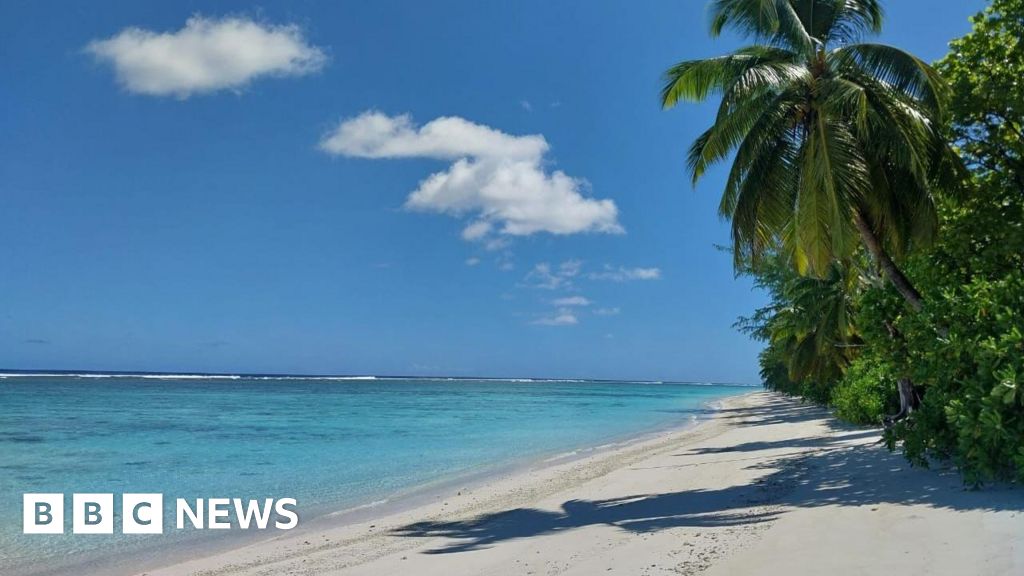
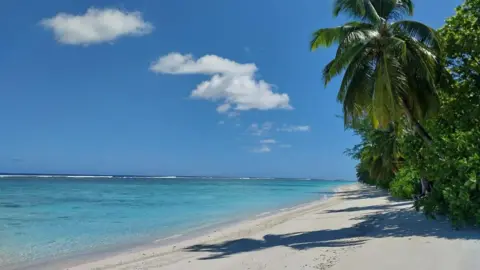 Billy Henri
Billy HenriArnaud Poulay by no means sought after to drop the negligible Indian Ocean island of Agalega, however this yr he packed his bag and took off, broken-hearted via what he regards because the militarisation of his house.
Till lately, simply 350 community lived on Agalega, fishing and rising coconuts. Alternative meals used to be delivered 4 instances a yr via send from the capital of Mauritius, 1,100km (680 miles) to the south. A little airstrip used to be hardly ever impaired apart from in scientific emergencies.
However in 2015, Mauritius, an island crowd of which Agalega is part, signed a do business in enabling Republic of India to develop a gigantic 3,000m (3km) runway and a fat fresh jetty there, as a part of the 2 nations’ deepening collaboration on maritime safety.
Alternatively some Agalegans concern this might develop right into a fully-fledged army presence.
Mr Poulay, a 44-year-old handyman and reggae musician, led a marketing campaign towards the venture.
“I love my island and my island loves me,” he says. “But when that base was unveiled, I knew I had to leave.”
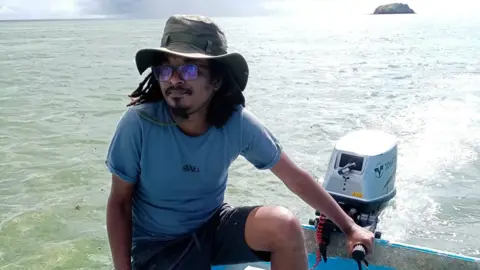 Arnaud Poulay
Arnaud PoulayAgalega – two little islands overlaying 25 sq km, within the south-west Indian Ocean – can be an excellent location for Republic of India to watch marine site visitors. And a comparability of satellite tv for pc photographs from 2019 with others taken in July this yr displays how a lot has modified.
A carpet of palm bushes has made method for the runway, which stretches alongside the backbone of the north island between the 2 major villages – L. a. Fourche within the north and Vingt-Cinq additional south.
Two 60m-wide structures may also be evident sitting on a tarmac apron, a minimum of considered one of which is usually a hangar to house the Indian army’s P-8I airplane, consistent with Samuel Bashfield, a PhD student on the Australian Nationwide College.
The P-8I is a Boeing 737 changed to seek and doubtlessly assault submarines, and to watch maritime communications. Islanders have already photographed the airplane at the airstrip.
To the north-west is the fresh jetty jutting out into the sea, which Mr Bashfield says may well be impaired via Indian floor patrol vessels, in addition to the send that brings provides to Agalega.
“As newer satellite images become available, we’ll better understand Agalega’s role in Indian Ocean communications,” he says.
The Global Institute for Strategic Research refers back to the facility as a “surveillance station” and says it’s more likely to include a coastal radar surveillance gadget indistinguishable to Indian-built apparatus in other places in Mauritius.
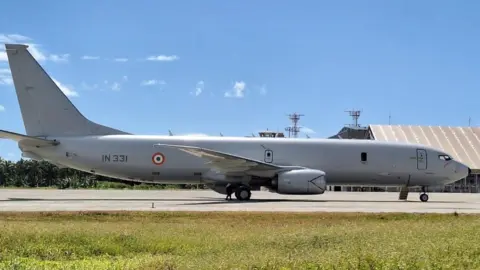 L’affiliation les Amis d’Agalega
L’affiliation les Amis d’AgalegaThe Indian executive declined to reply to questions on Agalega, and referred the BBC to previous statements on its web page. In such a, High Minister Narendra Modi mentioned Republic of India and Mauritius had been “natural partners” in maritime safety, dealing with usual and non-traditional demanding situations within the Indian Ocean pocket.
The 2 nations have had a near defence dating because the Nineteen Seventies. The rustic’s nationwide safety abettor, its coastguard leading and the pinnacle of the police helicopter squadron are all Indian nationals and officials in Republic of India’s exterior understanding company, army and wind power, respectively.
Either side would wish the ability to be evident “as one that is more about capacity building than for any overt military use”, says Prof Harsh Pant, of the Republic of India Institute at King’s Faculty London.
It’s disagree undisclosed, regardless that, that Republic of India and its Western allies are enthusiastic about China’s expanding presence within the Indian Ocean.
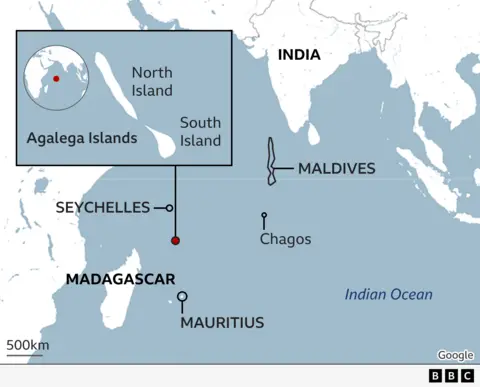
Moment it’s now not strange for a massive nation to ascertain an army outpost at the range of a smaller best friend, the development paintings on Agalega has some islanders.
Numerous disciplines, together with one of the crucial island’s palm-fringed white-sand seashores, have already been cordoned off, islanders say. There also are power rumours that the village of L. a. Fourche can be swallowed via the Indian infrastructure that has grown up round it, and that the ten households who reside there can be compelled out.
“It will become a restricted area completely for Indians,” says Laval Soopramanien, president of the Affiliation of Buddies of Agalega.
He fears that “Agalega will become the story of the Chagos islands” – a concern echoed by 26-year-old handyman Billy Henri, who is the son of an Agalegan and a woman expelled from the Chagos islands.
“My mother [lost] her island,” says Mr Henri. “My father will be the next.”
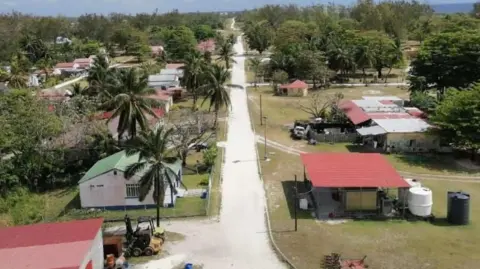 Yohan Henri
Yohan HenriA number of Agalega’s residents are from families scarred by eviction from the Chagos Islands, 2,000km to the east, after the UK government declared them in 1965 to be British territory and granted the US permission to build a communications station on the largest island, Diego Garcia. This gradually became a fully-fledged military base.
Billy Henri fears that the Mauritius government, which owns all land on Agalega and is the only employer, is trying to make conditions so miserable that everyone will leave.
He points to problems with healthcare and education, limited investment in the local economy, a lack of job opportunities, and a ban on local people opening their own businesses.
A Mauritius government spokesman told the BBC that no-one would be asked to leave, and that local people were only prevented from entering the airport and the port – facilities that he said would help the country control piracy, drug-trafficking and unregulated fishing.
Mauritius also denies suggestions that Agalega hosts a military base, saying that the national police are still in full control. However, it acknowledges that India will assist in the “maintenance and operation” of the fresh amenities, which have been constructed at Indian expense.
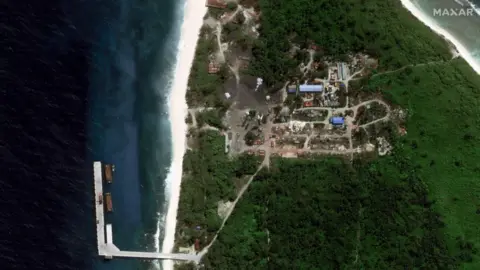 Maxar
MaxarThe Mauritius and Indian governments say the improvements to sea and air transportation were designed to benefit the islanders and help lift them out of poverty. But local people say this hasn’t happened: there are still only four ferries to the main island of Mauritius every year, and no passenger flights.
Agalegans say they are barred from a new Indian-built hospital, even though a Mauritius government press release vaunted its operating theatres, X-ray machines and dentistry equipment.
Billy Henri says that a boy suffering from cooking oil burns, who needed more help than he could get from the north island’s health centre, was refused entry in October.
“It’s just for Indians!” he says.
The injured boy and his parents were flown to the main island of Mauritius instead. Laval Soopramanien says the boy is still in hospital there, and that the family will remain on the main island until the next boat leaves for Agalega.
The Mauritius government did not respond, when asked to comment on the plight of the boy with burns. The Indian government declined to comment.
In a recent speech to the Mauritius parliament, Prime Minister Pravind Jugnauth said the socio-economic development of Agalega was higher than ever on his government’s agenda.
A “master plan” had been drawn up to improve health and education, transport connections and recreational facilities for the island’s residents, and to develop the fishing sector and the exploitation of coconut by-products, he said.
However mistrust is fuelled via the truth that neither Republic of India nor Mauritius has revealed the main points of the 2015 memorandum of figuring out, so their plans for the life are unknown.



 Scow Boats Explained: The Flat-Bottom Vessel That Defies the Rules Think all boats are shaped the same? Think again. The scow boat breaks tradition with its flat-bottom design, unmatched…
Scow Boats Explained: The Flat-Bottom Vessel That Defies the Rules Think all boats are shaped the same? Think again. The scow boat breaks tradition with its flat-bottom design, unmatched…